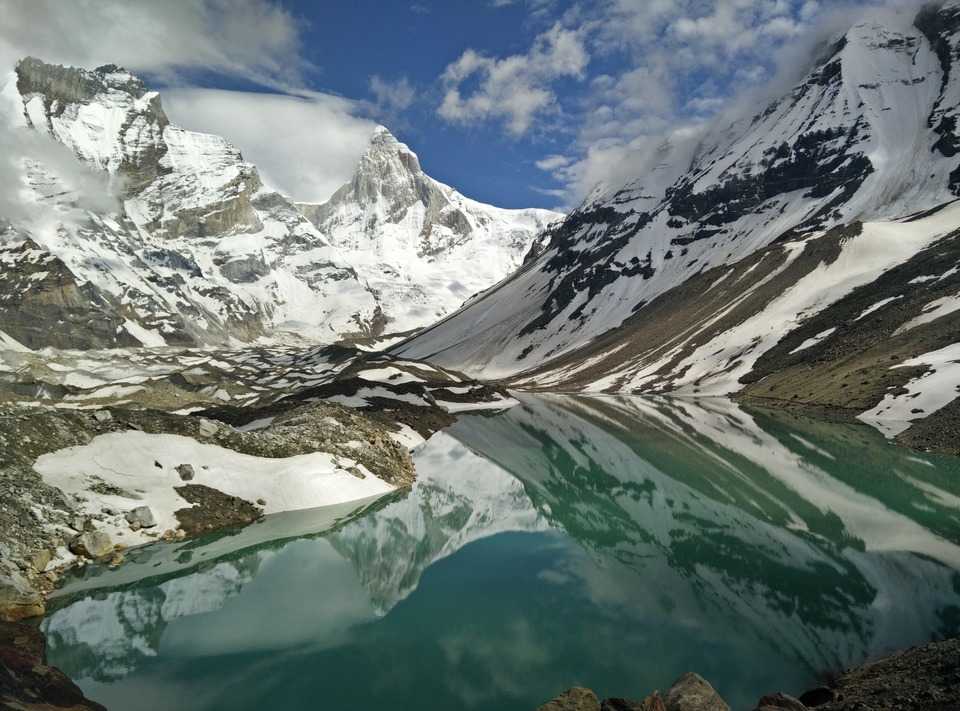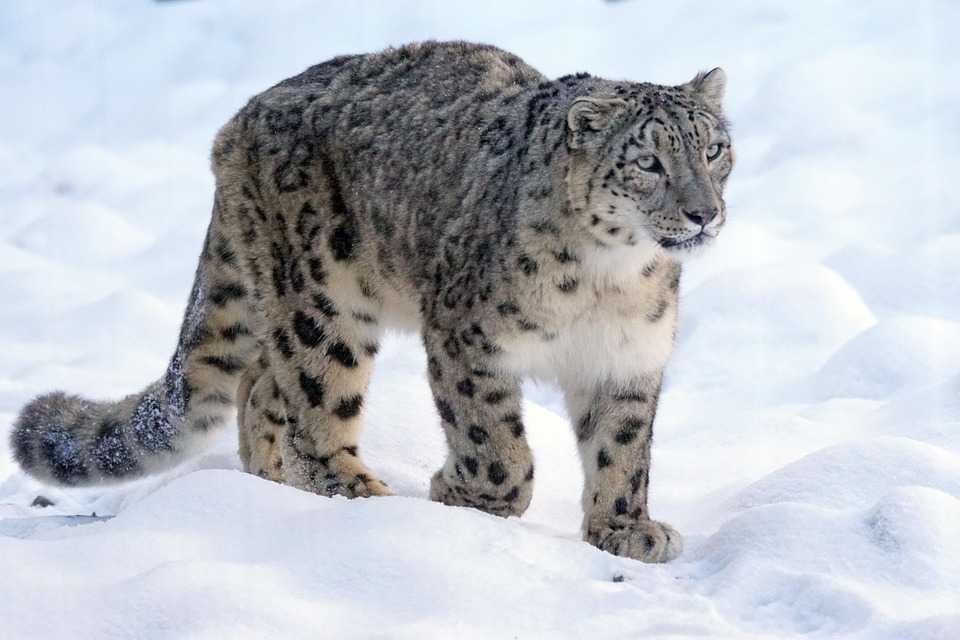Gangotri National Park
₹ 164 onwards
View Gangotri PackagesWeather :
Tags : National Park
Time Required : Summer Season i.e. April, May, and June
Gangotri National Park, Gangotri Overview
Gangotri National Park is nestled in Uttarkashi district of Uttarakhand state, India. This National Park owes its name from the Gangotri Glacier. Challenging treks, crushed snow, beaten trails, whistling woods, and ruffled leaves add to the thrill of visiting this National Park. One will easily encounter some of the oldest settlements, the holiest pilgrimage of Hindus, and the source of river Ganga while traversing through the Park. Idyllically situated in the natural surroundings of the Garhwal region, this National Park is a famous high-altitude Wildlife Sanctuary of India. The grandeur of the glacial world and numberless coniferous trees define the charming vision of Gangotri National Park.
Read More on Gangotri National Park
About Gangotri National Park

The entrance of the National Park
Legends from the epic Mahabharata can be heard, and the places associated with its story can be seen during treks or visit to the temples of this region. These places are not just picturesque but also spellbound visitors with its mystical aura. All these reasons thus make this National Park one of the best areas for trekking in Uttarakhand.
Geography of Gangotri National Park
The National Park has the typical high-altitude ecosystem and is influenced by the trans-Himalayan elements to an extent. A unique feature of this National Park is the Alpine scrub. Because the Park is close to the mountain terrain, the region is prone to landslides. The forest of this Park is mostly temperate, and one can find some clubbed areas of trees like Betula and Kharsu at different heights. Besides, the entire landscape is full of grassy area.
People looking forward to visiting Gomukh have to go through craggy mountains which is very steep, and the route is disturbed at some places by landslides. Landslides primarily occur because of uprooting trees and the consequent soil erosion by the rain.
Biodiversity in Gangotri National Park
The climatic conditions of the National Park can boast of a perfect balance between cold and frigid temperatures. This, in turn, sustains an ecosystem harbouring the rarest of some species of Snow Leopards and Himalayan Monal. With 15 species of mammals and 150 varieties of birds, Gangotri National Park is known for its abundant and diverse fauna. The fauna is dependant on the vast array of flora gracing the biodiversity of this park.
Flora and Fauna of Gangotri National Park
Flora
The flora of Gangotri National park primarily comprises of Western Himalayan Alpine Shrub at high altitudes and Western Himalayan Sub-Alpine Conifer forests at lower elevations. The other very prominent species of plants are Rhododendron, Oak, Spruce, Fir, Deodar, and Chirpine. The flora often differs according to the altitude. In the lower altitudes, one can find Kharsu Oak, whereas Betula is found in abundance in the higher elevations. However, patches of alpine scrub are dominant in both the lower and higher altitudes.
Fauna
The diverse range of flora is capable of providing shelter to a swarm of fauna which includes several rare and unique species of animals existing on Earth. The Himalayan Snowcock (Tetraogallus himalayensis), Koklass (Pucrasia macrolopha), Himalayan Monal (Lophophorus impejanus), Musk Deer (Moschus chrysogaster), Blue Sheep or Bharal (Pseudois nayaur), Brown Bear (Ursus arctos), Himalayan Tahr (Hemitragus jemlahicus), Ibex, Black Bear (Selenarctos thibetanus), and the Snow Leopard (Uncia uncia) are some of the significant species found in this region. Besides, the exotic species of birds inhabiting this park is noteworthy. Birds like Pheasants, Bulbul, Parakeet, Partridges, Doves, Himalayan Barbet, and Serow are included in the list.

Snow Leopard
Safari and Other Activities in Gangotri National Park
There are eleven such tourist spots in Gangotri National Park which entice travellers to spend the best of their leisure time. From rugged terrains to adventurous sites, this National Park has everything to offer to the manifold of visitors every year. Nelong Valley, Bhojbasa, Gaumukh trek, Tapovan Trek, Kedartal, Gangotri Temple, Chirbasa, Gangotri town, Bhoj Kharak, Kedar Kharak, Gangotri glacier are the prominent spots where tourists can opt for various activities.

Kedar Taal
Entry Fees, and Fees for other activities
For Indians: INR 150 per person (three days)
For Non-Indians: INR 600 per person (three days)
Charge for extra days
For Indians: INR 50 per day
For Non-Indians: INR 250 per day
Still Camera and Videography (non-commercial use): No charge
Still Camera and Videography (commercial use)
For Indians: INR 500
For Non-Indians: INR 1500
No fee is charged for children under five years. Indian students with a valid ID Card between 5-18 years will be charged 1/4th of the ticket price. Know that the fees for entry and other purposes remain the same for all SAARC countries.
The procedure to enter the National Park is a little different from the other Parks. One needs to get the permit from the District Forest Officer (DFO) Uttarkashi before going to the Park. This form can also be filled and submitted online. Here, you need to mention the area you want to visit like Gaumukh, Nandanvan, Tapovan, Kedartaal, Sundervan, Basu ki Taal, or Raktvan along with the preferred dates.
The form will also include other important details of your entire group of people with their ID proofs. After the submission of this application, you will get the permit which you need to submit at the Forest Check Post. It is approximately 1.5km away from Gangotri.
Besides this, you can also rent a tent during your stay in the National Park. The charges are as follows:
Small Tent for two people
For Indians: INR 50
For Non-Indians: INR 100
Medium Tent for four people
For Indians: INR 100
For Non-Indians: INR 200
Kitchen Tent
For Indians: INR 100
For Non-Indians: INR 200
Tent Pitching
For Indians: INR 50
For Non-Indians: INR 100
Note that tent pitching is allowed only at specific locations in which ten to fifteen small tents will be allowed.
How to Reach the National Park
By Road: The nearest bus station to the National Park is at Dehradun. However, you can also find private taxis from the Dehradun station.
By Air: The nearest airport, i.e., Jolly Grant Airport is at Dehradun. It is around 220 km away from the National Park.
Top Hotel Collections
Top Hotels Near Gangotri National Park
Gangotri National Park Reviews

Have a Question on Gangotri National Park?

experience.